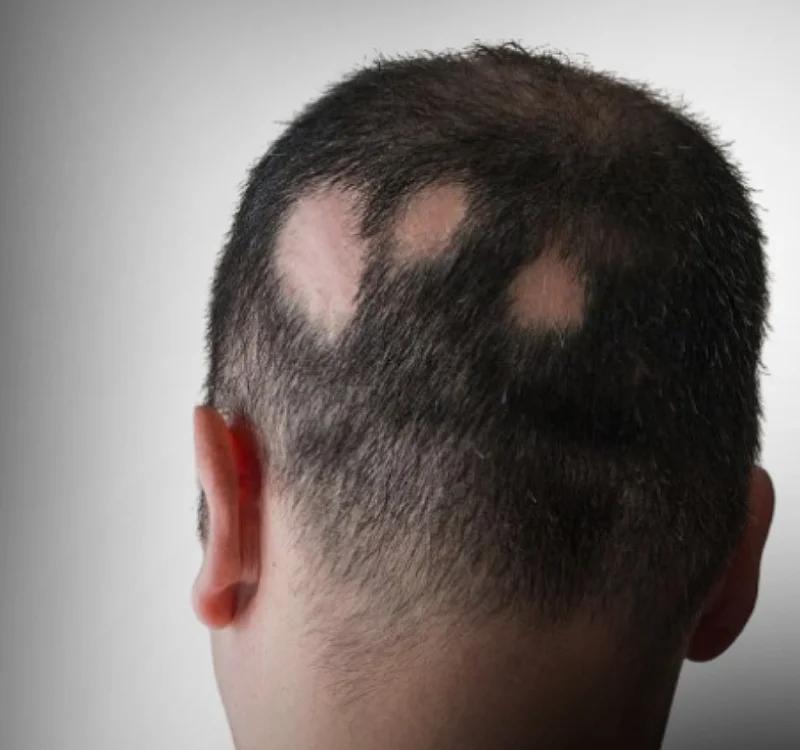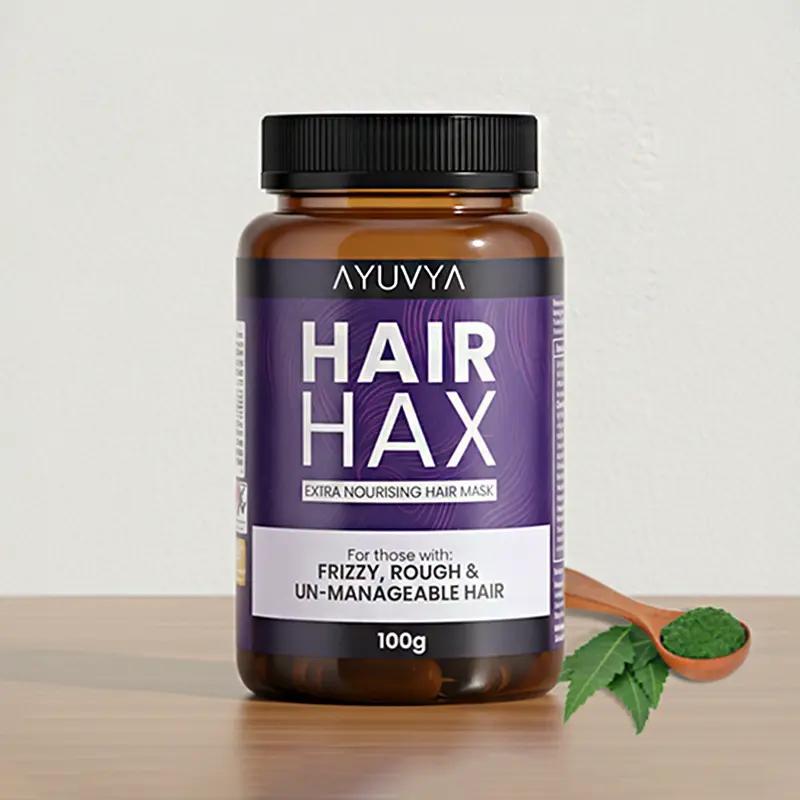8 Effective Alopecia Areata Ayurvedic Treatment Options to Try
Oct 05, 2024

Alopecia Areata is an autoimmune condition that causes sudden hair loss from some or all areas of the body, mostly from the scalp. This condition leads to small, round patches on the scalp and other body parts. Alopecia Areata attacks the hair follicles, which results in hair shedding. There are a lot of factors that eventually lead to this severe condition, but with the right treatment and essential lifestyle changes, you can easily improve it. In this blog, we will discuss the causes and alopecia arata ayurvedic treatment.
Table of Contents:
- Causes of Alopecia Areata: You Need to Know.
- Different Types of Alopecia Areata: Which One Affects You?
- Key Signs and Symptoms of Alopecia Areata.
- The Power of Ayurvedic Treatments for Alopecia Areata.
- Conclusion.
- FAQs.
Causes of Alopecia Areata: You Need to Know
1. Genetics: Alopecia Areata can run in families. If someone in your family is experiencing balding or hair loss, It might be more likely to get it too. Therefore, genes play an important role in alopecia areata.
2. Hair Care and Styling: Doing aggressive hair care practices such as tying your hair tightly and using products that contain harsh chemicals can damage hair follicles, which results in alopecia areata.
3. Stress: An increase in stress level can impact your overall well-being and result in hair loss. Emotional or physical stress can lead the immune system to attack hair follicles, which results in excessive hair loss.
4. Vaccination: In some cases, vaccination triggers alopecia areata. An immune response from a vaccine may cause the body to target hair follicles, leading to hair loss.
5. Viral Infection: These can be linked to alopecia areata. When the body fights off a virus, the immune response attacks hair follicles, which results in excessive hair loss.
6. Vitamin D deficiency: Low levels of vitamin also affect the amount of hair. Vitamin D is important for healthy hair follicles. Therefore, the deficiency of vitamin D develops alopecia areata.
Different Types of Alopecia Areata: Which One Affects You?
1. Alopecia Areata (Patchy): This is the most common form, characterized by one or more small, round patches of hair loss on the scalp or other areas. Hair can regrow in these patches over time.
2. Alopecia Totalis: In this type, all hair on the scalp is lost. It can occur suddenly and may lead to complete baldness on the head. Regrowth is possible, but it varies by individual.
3. Alopecia Universalis: This is the most severe form, resulting in the loss of all body hair, including scalp, eyebrows, eyelashes, and body hair. It can significantly affect a person's appearance and self-esteem.
4. Diffuse Alopecia Areata: This type leads to overall thinning of hair across the scalp rather than distinct patches. Hair loss may be more gradual, and regrowth can be inconsistent.
5. Ophiasis Alopecia: In this variant, hair loss occurs in a band-like pattern around the sides and back of the scalp. It can be more resistant to treatment and may be associated with a higher chance of recurrence.
Key Signs and Symptoms of Alopecia Areata
Alopecia areata is identified by various signs and symptoms. Sudden hair loss, resulting in bald patches on the scalp, are the early symptoms. These patches are round or oval in shape with skin redness. Alopecia areata results in rapid hair loss and hair thinning. In some cases, there may be an itching or burning sensation on the scalp. Hair regrowth can be possible, but it may also be patchy or incomplete. This autoimmune condition leads to hair loss of different body parts, such as eyebrows, beards, or eyelashes. If you notice any of these symptoms, consult a specialist as soon as possible.
The Power of Ayurvedic Treatments for Alopecia Areata
1. Ayurvedic therapies: The goal of Ayurvedic therapies is to bring the body's energies into balance. These techniques support general wellness and help in the management of diseases like alopecia areata by utilizing natural remedies, dietary modifications, and lifestyle changes.
2. Pitta Pacifying Diet: Dietary items that are cooling to the Pitta domic include fruits, vegetables, and whole grains. Eating less hot, oily, or spicy food will help promote healthy hair development and minimize inflammation.
3. Panchakarma Therapy: Panchakarma is a detoxifying procedure that removes the body of pollutants. To improve total well-being and restore balance, it includes therapies like massages and herbal treatments, which may be beneficial for hair health.
4. Ayurvedic Herbs: Certain herbs from Ayurveda, such as amla and bhringraj, are believed to support healthy hair. When used regularly, these herbs can help maintain healthy scalp function, strengthen hair, and stop hair loss.
5. Ayurvedic Oils and Herbal Hair Packs: You may nourish your hair and scalp by using oils like sesame or coconut oil. Natural components used to make herbal hair packs may help to improve the texture and strength of hair.
6. Techniques for Reducing Stress and Scalp Massage: Regular scalp massage promotes blood flow and helps in hair development. By soothing the mind, stress-reduction practices like yoga and meditation can also promote general hair health.
7. Lifestyle Adjustments: You may reduce your chance of hair loss and enhance the health of your hair by adopting easy lifestyle adjustments, including drinking enough water, getting adequate sleep, and avoiding harsh chemicals.
8. Ayurvedic Supplements & Immunity Boosters: Using immune-boosting supplements like turmeric and ginger can benefit your general well-being. Supplements from Ayurveda may aid in maintaining bodily balance.
Conclusion
Alopecia areata ayurvedic treatment is a natural way to help with hair loss. This treatment focuses on balancing your body and includes herbs, diet changes, and lifestyle tips. Many people find that ayurvedic medicine for alopecia areata can improve their hair and help it grow back. It’s important to be patient, as results may take a while. Using ayurvedic medicine for alopecia areata can also work well with other treatments. If you're looking for a gentle way to address alopecia areata, these ayurvedic methods might be a good fit. Remember, everyone’s journey is different, so it may take some time to find what works best for you. With the right support, you can aim for healthier hair!
Frequently Asked Questions
The best ayurvedic remedy for alopecia areata often combines herbal treatments, dietary adjustments, and stress reduction techniques to support hair health and regrowth although it is not specified that this remedy will cure alopecia areata. It can promote hair growth.
Alopecia barbae ayurvedic treatment includes natural remedies and lifestyle changes aimed at strengthening beard hair follicles and promoting regrowth.
Alopecia areata beard ayurvedic treatment may involve using specific oils and herbs to stimulate hair growth and improve scalp health in the beard area.
Alopecia ayurvedic treatment at home can include scalp massages with herbal oils, applying hair packs, and following a Pitta pacifying diet.
To cure alopecia naturally, consider using a combination of herbal remedies, a balanced diet, and lifestyle modifications that promote overall health.
Ayurvedic medicine for alopecia may include natural oils, herbs, and dietary changes to nourish hair and enhance growth while reducing inflammation.
Ayurvedic medicine for alopecia areata often includes herbs like bhringraj and amla, which help strengthen hair and support scalp health.
Alopecia areata ayurvedic treatment focuses on balancing body energies through natural remedies, dietary changes, and herbal therapies to promote hair regrowth.














